| [1] Longo UG, Ciuffreda M, Mannering N, et al. Outcomes of posterior-stabilized compared with cruciate-retaining total knee arthroplasty.J Knee Surg. 2018;31(4):321-340. [2] Wylde V, Dennis J, Gooberman-Hill R, et al.Effectiveness of postdischarge interventions for reducing the severity of chronic pain after totalknee replacement: systematic review of randomised controlled trials.BMJ Open. 2018;8(2): e020368. [3] Liao CD, Huang YC, Lin LF, et al.Continuous passive motion and its effects on knee flexion after total knee arthroplasty in patients with knee osteoarthritis.Knee Surg Sports Traumatol Arthrosc. 2016;24(8):2578-25 86.[4] Liu CY, Li CD, Wang L, et al. Function scores of different surgeries in the treatment of knee osteoarthritis: A PRISMA-compliant systematic review and network-meta analysis. Medicine (Baltimore). 2018 ;97(21):e10828.[5] Mont MA, Beaver WB, Dysart SH, et al. Local infiltration analgesia with liposomal bupivacaine improves pain scores and reduces opioid use after total knee arthroplasty: results of a randomized controlled trial. J Arthroplasty. 2018;33(1): 90-96.[6] Price AJ, Alvand A, Troelsen A, et al. Knee replacement.Lancet. 2018;392(10158):1672-1682. [7] Mistry JB, Elmallah RD, Bhave A, et al. Rehabilitative guidelines after total knee arthroplasty: a review. J Knee Surg. 2016;29(3):201-217.[8] Peter WF, Nelissen RG, Vlieland TP. Guideline recommendations for post-acute postoperative physiotherapy in total hip and knee arthroplasty: are they used in daily clinical practice? Musculoskeletal Care. 2014;12(3):125-131.[9] Jahic D, Omerovic D, Tanovic AT, et al.The Effect of Prehabilitation on Postoperative Outcome in Patients Following Primary Total Knee Arthroplasty.Med Arch. 2018; 72(6):439-443.[10] Hyodo K, Masuda T, Aizawa J,et al.Hip, knee, and ankle kinematics during activities of daily living: a cross-sectional study.Braz J Phys Ther. 2017;21(3):159-166. [11] Chaudhry H, Bhandar M.Cochrane in CORR (®): Continuous Passive Motion Following Total Knee Arthroplasty in People With Arthritis (Review). Clin Orthop Relat Res. 2015;473(11): 3348-3354. [12] Harvey LA, Brosseau L, Herbert RD. Continuous passive motion following total knee arthroplasty in people with arthritis.Cochrane Database Syst Rev. 2014;(2):CD004260. [13] Doll H, Gentile B, Bush EN, et al. Evaluation of the measurement properties of four performance outcome measures in patientswith elective hip replacements, elective knee replacements, or hip fractures. Value Health. 2018 ; 21(9):1104-1114[14] Nagra NS, Hamilton TW, Strickland L, et al. Enhanced recovery programmes for lower limb arthroplasty in the UK. Ann R Coll Surg Engl. 2017:1-6.[15] Schache MB, McClelland JA, Webster KE. Does the addition of hip strengthening exercises improve outcomes following total knee arthroplasty? A study protocol for a randomized trial. BMC Musculoskelet Disord. 2016;17:259.[16] Boese CK, Weis M, Phillips T, et al. The efficacy of continuous passive motion after total knee arthroplasty: a comparison of three protocols.J Arthroplasty. 2014;29(6):1158-1162. [17] Tedesco D, Gori D, Desai KR, et al.Drug-Free Interventions to Reduce Pain or Opioid Consumption After Total Knee Arthroplasty: A Systematic Review and Meta-analysis.JAMA Surg. 2017;152(10):e172872. [18] Maniar RN, Baviskar JV, Singhi T, et al.To use or not to use continuous passive motion post-total knee arthroplasty presenting functional assessment results in early recovery. J Arthroplasty. 2012;27(2):193-200.e1. [19] Boese CK, Weis M, Phillips T, et al.The efficacy of continuous passive motion after total knee arthroplasty: a comparison of three protocols.J Arthroplasty. 2014;29(6):1158-1162.[20] Jiang C, Lou J, Qian W, et al. Impact of flexion versus extension of knee position on outcomes after total knee arthroplasty: a meta-analysis. Arch Orthop Trauma Surg. 2017 ;137(2):257-265.[21] Schache MB, McClelland JA, Webster KE. Does the addition of hip strengthening exercises improve outcomes following total knee arthroplasty? A study protocol for a randomized trial.BMC Musculoskelet Disord. 2016;17:259.[22] Liu J, Li YM, Cao JG,et al.Effects of knee position on blood loss following total knee arthroplasty: a randomized, controlled study. J Orthop Surg Res. 2015;10:69.[23] Graham JE, Granger CV, Karmarkar AM, et al.The Uniform Data System for Medical Rehabilitation: report of follow-up information on patients discharged from inpatient rehabilitation programs in 2002-2010.Am J Phys Med Rehabil. 2014;93(3):231-244. [24] Bak?rhan S, Ünver B, Karatosun V. Effects of two different continuous passive motion protocols on the functional activities of total knee arthroplasty inpatients.Acta Orthop Traumatol Turc. 2015;49(5):497-502.[25] Fitz W, Shukla P, Li L, et al. Early Regain of Function and Proprioceptive Improvement Following Knee Arthroplasty.Arch Bone Jt Surg. 2018;6(6):523-531.[26] Knapik DM, Harris JD, Pangrazzi G,et al.The basic science of continuous passive motion in promoting knee health: a systematic review of studies in a rabbit model. Arthroscopy. 2013;29(10):1722-1731.[27] Herbold JA, Bonistall K, Blackburn M. Effectiveness of continuous passive motion in an inpatient rehabilitation hospital after total knee replacement: a matched cohort study.PM R. 2012;4(10):719-725. [28] Tarakji BA, Wynkoop AT, Srivastava AK, et al. Improvement in depression and physical health following total joint arthroplasty. J Arthroplasty. 2018;33(8):2423-2427.[29] Lisi C, Caspani P, Bruggi M, et al. Early rehabilitation after elective total knee arthroplasty. Acta Biomed. 2017;88(4S):56-61. |
.jpg)
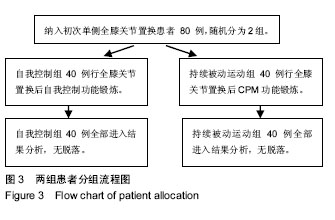
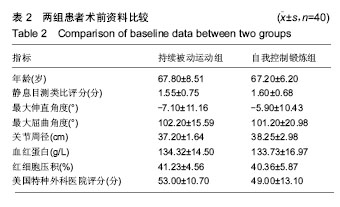
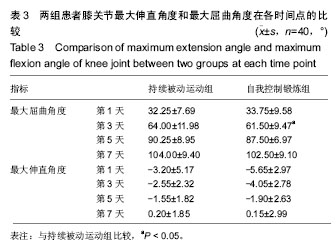
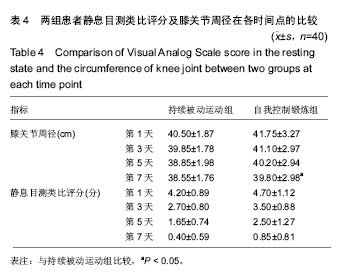
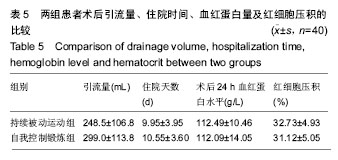
.jpg)
.jpg)
.jpg)
.jpg)